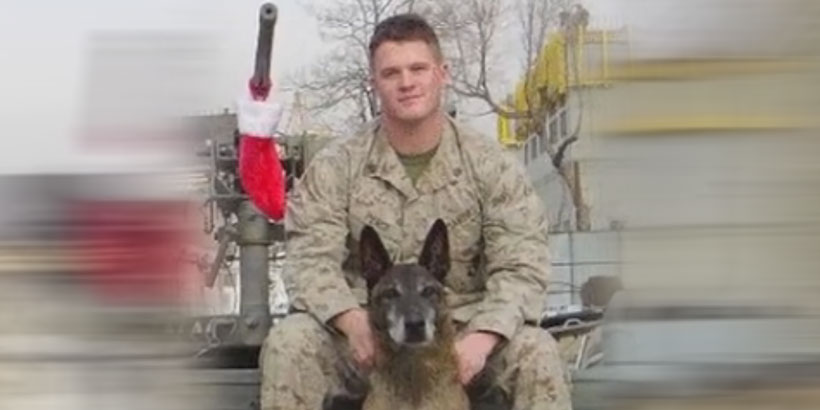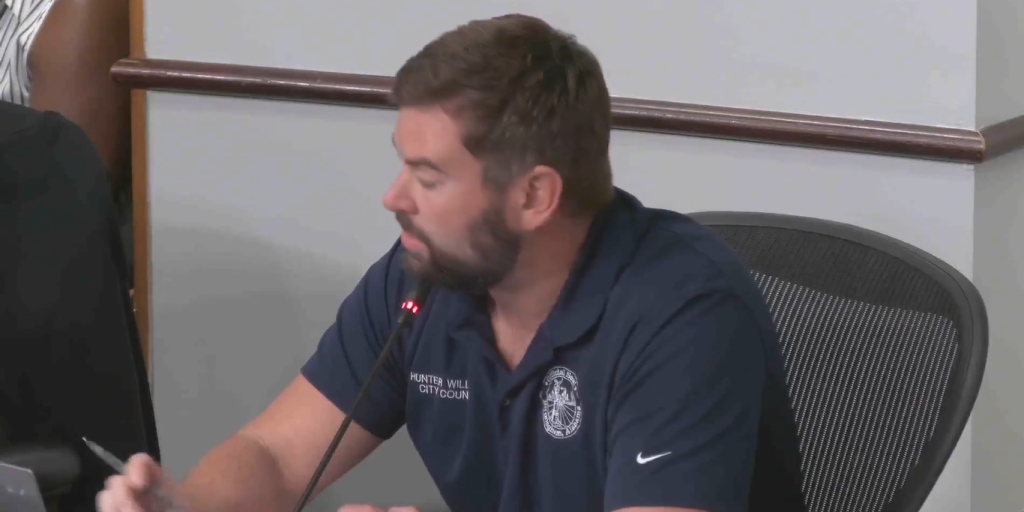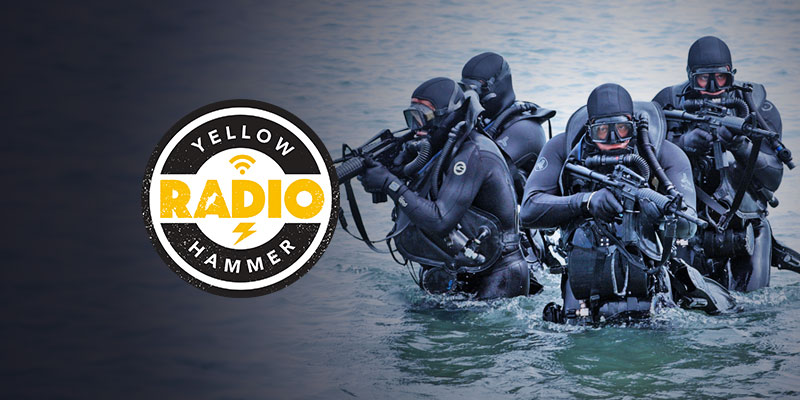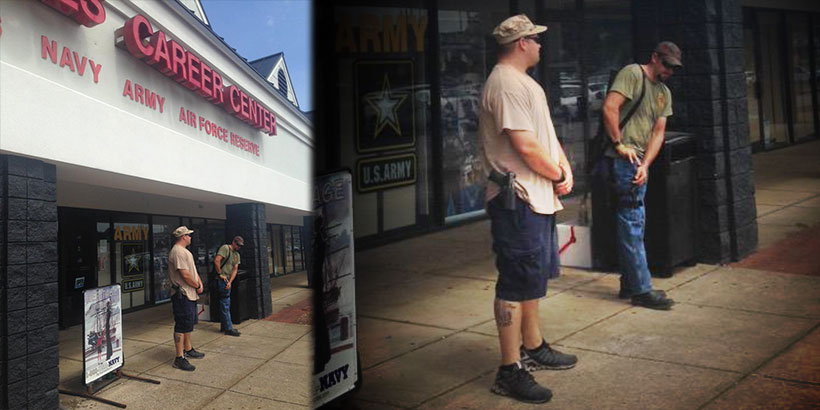(Audio above: Retired Marine Matt Pierce discusses his combat experience on Yellowhammer Radio with Cliff Sims)
Alabama-based Marine Matt Pierce did a total seven combat tours of duty in Iraq and Afghanistan before retiring from active service in 2012. He is an expert dog handler and explosive ordinance disposal technician (EOD Tech), meaning Pierce was often called upon to disarm improvised explosive devices in hostile territory.
“You can only screw up once, that’s the rule,” Pierce said during a recent Yellowhammer Radio interview. “You screw up once and you’re a pink mist. That’s just how it operates.”
SUBSCRIBE: Yellowhammer Radio podcast
Pierce’s job led to him enduring numerous serious blast injuries in 2010 and 2011 and made him well known in combat medical circles as a result of a VA Hospital study on the effects of post-traumatic stress disorder and battlefield concussions.
“The Boston VA was running a program on PTSD and traumatic brain injury and they were looking for somebody that had experienced multiple concussions, that had been exposed to a lot of horrific things,” he recalls. “By the grace of God I’ve been lucky enough not to be cooked by (a bomb), but with all my concussions I was the perfect candidate for the study and the story got picked up by USA Today and they ran with it back in 2012.”
Here’s how USA Today described Pierce’s role in the study:
Medical technician Marge Ahlquist straps a blood-pressure cuff around Matt Pierce’s left bicep, the one with the wrap-around Arabic script tattoo he got after his combat tour in 2006. Translated, it reads, “For those I love I sacrifice.”
(…)
For the next several hours, researchers will take a medical history from Pierce and administer a regimen of tests…
He will be asked to detail each blast he survived that left him with a mild traumatic brain injury — the time three artillery rounds detonated under his armored vehicle, blowing out the engine and leaving him briefly unconscious; and the time he was pulling a disarmed improvised explosive device, or IED, out of the ground and a secondary booby trap detonated, knocking him off his feet.
“I never remember the sound,” he says.
Then there is that day in 2007 in Iraq. He and a close friend, Sgt. Justin Noyes, were on either side of a road moving a barbed-wire barrier in preparation for disarming a buried bomb when Noyes stepped on another IED no one saw, and Pierce saw his friend blown apart.
He will explain to a psychologist about graduating from EOD school in 2004 with Noyes and two other Marines. How they grew close. And how Pierce is the only survivor.
“A lot of bad things happened to really good people,” he explains later.
He will talk about the nightmares, vivid images in his mind of the carnage he witnessed after suicide bombers detonated explosives and dozens of civilians died, many of them children he and other Marines rushed in trying to assist.
“(I’m) waking up screaming, fighting, kicking (at) nothing in the dark. It just feels like I’m re-enacting everything that happened,” he says.
EXPERIENCE AT THE VA
According to USA Today, the VA study concluded America’s newest veterans “appear to be growing old before their time. Scientists see early signs of heart disease and diabetes, slowed metabolisms and obesity — maladies more common to middle age or later.”
“I’d love to talk good about the VA because they have some great programs,” said Pierce. “But when it comes to primary care… If I went in there with a broken bone, they’d say, ‘Ok we’ll get you on a list and see you in six weeks.’ That’s an exaggeration, but it was about that bad.
Alabama has seen more than its fair share of VA scandals.
A Central Alabama Veterans Health Care System (CAVHCS) employee even took a recovering vet to a crack house in Tuskegee to buy illegal drugs and solicit a prostitute, but was still employed by the VA over a year after the events occurred.
An internal investigation also found the employee to be guilty of a wide range of other infractions, including “patient abuse, misuse of government vehicles, filing false overtime requests and multiple ethics violations.” But according to the CAVHCS employee directory, the individual is still employed by the VA. It is unclear if any administrative or criminal action was ever taken against the individual.
“All the VA employees are locked in so they don’t have to work as hard,” says Pierce. “They don’t have to go further because they can’t be fired.”
PIERCE’S WORK IN THE PRIVATE SECTOR
Pierce’s work is much less stressful now, but he continues to put his skills to use for Alabama-based defense contractor Xtreme Concepts and its dog-handling operation IK9, which is working on a new partnership with the VA that Pierce is particularly excited about.
“The program right now is under study, but we are training service dogs and emotional support dogs to be paired with veterans and increase their mobility and happiness in life,” he said. “So far the study is going great… The VA will give us people to pair with an emotional support or service dog.”
He is also working with the non-profit First Foundation.
“We’re taking dogs coming back from combat and placing them with former military or first responders that may have psychological or physical disabilities,” he explained. “We try to improve the life of both the K9 and the individual. We’ve placed about 30 dogs in the last several months.”
CHOCOLATE MOUNTAIN AND SCRAPPERS
Pierce laughs off his short-term memory loss, and it’s clear from his Yellowhammer Radio interview that his sense of humor has remained intact in spite of the tumultuous past decade.
One of his favorite stories involves Chocolate Mountain Aerial Gunnery Range, a half-million acre aerial bombing range used by the U.S. Navy and Marines for practice. At some point each year there is a month-long training exercise during which hundreds of planes drop thousands of explosive devices on practice runs.
At the conclusion of the exercise, the military closes the range for about three weeks and sends out the EOD techs to detonate any unexploded bombs, and, according to Pierce, “have campfires and things like that.”
Unbeknownst to Pierce and his colleagues, individuals living in the local area were sneaking onto the range to steal the aluminum off of the bombs to sell them for scrap metal.
Pierce recalls what happened next:
The problem was they were coming into what’s called a submunitions range. To sum it up quickly: A jet drops a payload, it opens up, and anywhere between 21 and 60 baseball-sized submunitions fall. These are touch sensitive. If the wind picks up, these go off. You don’t want to go in there. We won’t even go in there if the wind is over five miles per hour. Well, these guys are going in there and picking them up like nobody’s business.
So I get a phone call that I have to go to a post blast stateside. That never happens. An explosive device had detonated somewhere in Arizona and I had to respond to it…
So I go up there and I’m looking — it’s at somebody’s trailer in the middle of nowhere — and I look in the back the guy’s pickup truck and it’s all these submunitions. I physically won’t pick one up and he’s got 100-150 of them just riding around in the back of his vehicle! You hit a bump and they could go off.
So my only course of action is to blow it where it sits. I bring out my demo bag, line up the C-4, and I took out his pickup truck, I took out his house! There was no other safe way to remove them.
THE RUSH OF WALKING UP ON AN UNDETONATED BOMB
Pierce still vividly remembers the first time was called upon to disarm a roadside bomb, and the self-proclaimed adrenaline junkie says he and his fellow Marine EOD Techs usually did it without wearing the Michelin Man-style bomb suit often seen on TV and in movies.
“Because it is so hot out there, we don’t wear the bomb suit,” he explained. “Other branches use it, the Marine Corp was given the option to use it or not use it. The bomb suit is great against the blast pressure, but horrible against fragmentation. It would cut right through it, so it’s kind of pointless.”
Here’s how Pierce describes the feeling of walking up on an armed explosive device:
But walking up on it, my first thought is, what kind of initiator is this? Is it command wire, is it cell phone, is this victim actuated, like a pressure strip or something like that?
Basically I’ll work a helix — start from the outside and work my way in making circles checking for secondary devices, searching for trip wires or a command wire that’s in the ground that may lead to this device. Then I’m also carrying a system that blocks radio signals. Then it just comes down to, do they have an anti-tamper device in it? That would mean they are all about killing first responders, either the first guys on scene, or they love getting us EOD Techs…
Honestly, walking down on an IED, 99 out of 100 times, I’m just focused. It doesn’t bother me. I do what I have to do, then when I get back to the truck I dang near poop myself. That’s when the adrenaline wears off and you’re like, “Oh my gosh, what just happened?” After multiple IED, over and over and over again, you just kind of become immune to it.












